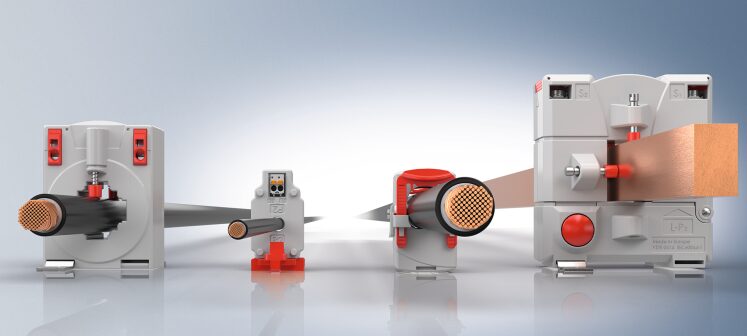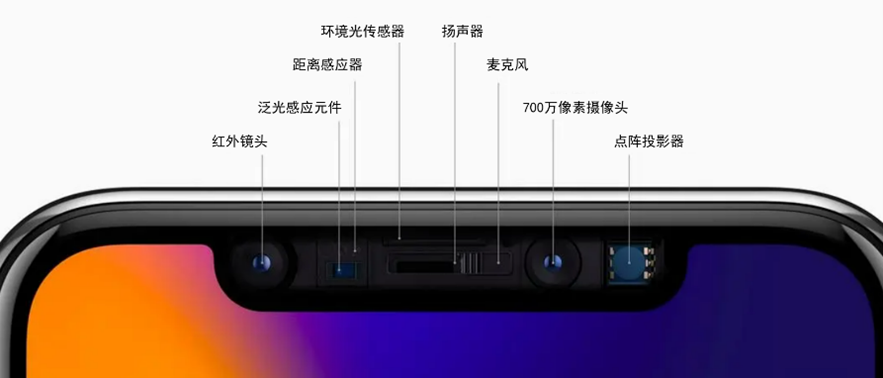
Sensor
With the continuous development of new generation information technologies such as 5G, the Internet of Things, and Artificial Intelligence, data is expected to show an exponential growth trend and gradually become a fundamental strategic resource and a revolutionary key element in the digital age. As the only functional device for data collection, sensors are the core components of information technology, and their importance is self-evident.
Composition of Sensors
The national standard GB/T7665-2005 defines a sensor as: “A device or apparatus that can sense the measured object and convert it into a usable output signal according to certain rules, usually consisting of a sensitive element and a conversion element.“

Block Diagram of Sensor Components
Here, the sensitive element refers to the part that can directly sense or respond to the measured object, outputting a physical quantity signal that has a definite relationship with the measured object. For example, the elastic diaphragm of a strain gauge pressure sensor is the sensitive element, which converts the measured pressure into the deformation of the elastic diaphragm.
The conversion element converts the physical quantity signal output by the sensitive element into an electrical signal. For example, the strain gauge in a strain gauge pressure sensor is the conversion element, which converts the deformation of the elastic diaphragm under pressure into a change in the resistance value of the strain gauge. If the sensitive element directly outputs an electrical signal, then this sensitive element also serves as the conversion element, such as a thermocouple that directly converts temperature changes into thermoelectric potential output.
Since the output signals from sensors are generally very weak, they usually require conversion circuits for signal amplification and modulation before they can be displayed or used for control. The conversion elements and conversion circuits typically also need auxiliary power supplies for operation.
Classification of Sensors
Sensors come in a wide variety of types and principles, detecting almost all parameters. Typically, a single sensor can detect multiple parameters, and a single parameter can be measured by multiple sensors. Therefore, there is no unified classification method for sensors to date, which are mainly classified according to operating principle, input information, and application scope.
(1) Classification by Operating Principle. Based on their operating principles, sensors can be roughly divided into three categories: physical, chemical, and biological sensors. Physical sensors are made using the physical properties of certain conversion elements and the special physical properties of certain functional materials, such as temperature sensors made from thermocouples, which utilize the thermoelectric effect of metal conductor materials and the contact electromotive force effect between different metal conductors to measure temperature.
Chemical sensors utilize the principles of electrochemical reactions between sensitive materials and substances to convert inorganic and organic chemical components and concentrations into electrical signals, such as gas sensors, humidity sensors, and ion sensors.
Biological sensors are constructed using the biological effects of materials, such as enzyme sensors, microbial sensors, physiological quantity (blood components, blood pressure, heart sounds, blood proteins, hormones, muscle strength, etc.) sensors, tissue sensors, and immunosensors.
(2) Classification by Input Information. Sensors can be classified based on input quantities as displacement sensors, velocity sensors, acceleration sensors, temperature sensors, pressure sensors, force sensors, color sensors, magnetic sensors, etc., named after the input quantity (the measured object).
(3) Classification by Application Scope. According to their application scope, sensors can typically be divided into industrial, agricultural, civilian, scientific research, medical, military, environmental protection, and household sensors. If classified by specific usage scenarios, they can also be divided into automotive, marine, aviation, spacecraft, and disaster prevention sensors.
Application Scenarios of Sensors
Smart Terminals
Today’s smart terminals are inseparable from sensors. Modern smartphones have numerous functions, thanks to sensors. In the notch of the iPhone screen, there are eight sensors, including an infrared lens, ambient light sensor, distance sensor, environmental light sensor, speaker, microphone, camera, and dot projector. In addition, smartphones also include gravity sensors, accelerometers, magnetic sensors, gyroscopes, fingerprint sensors, etc.

Analysis of the Front Camera Structure of iPhone’s Notch
In smart wearable devices, sensors serve as core components, enhancing the human “sixth sense” capabilities. In Google Glass, to allow developers to easily create some AR (Augmented Reality) applications, some API interfaces in the sensors may be temporarily hidden. These sensors include MPL gyroscopes, accelerometers, magnetic sensors, linear accelerations, light sensors, positioning devices, and more than ten other sensors.
Smart Home
Sensors are the foundation for control systems in smart homes. With the advancement of technology, more and more sensors are being used in smart home systems, such as temperature and humidity sensors, gas monitoring sensors, light sensors for monitoring indoor environments; infrared sensors for human interaction, smart door/window magnets, sound sensors, and other leak detectors, smart switches, etc.
Autonomous Driving
The rise of autonomous driving technology has further propelled MEMS sensors into the automotive field. Autonomous vehicles require a large number of sensors for perception and positioning, including cameras, infrared sensors, millimeter-wave radar, short- and medium-range millimeter-wave radar, long-range millimeter-wave radar, laser radar, and ultrasonic radar.
Smart Industry
In industrial production, sensors are widely used, and every link in industrial production requires sensors for monitoring, feeding data back to the control center to enable timely intervention in case of abnormal nodes, ensuring normal industrial production. In industrial robots, the main sensors used include position sensors, proximity sensors, velocity sensors, force sensors, tactile sensors, visual sensors, and pressure sensors.
Future Development Trends of Sensors
With the advent of the era of connectivity and the widespread application of new materials and technologies, sensors will exhibit the following development trends.
“Intelligent”. The intelligence of sensors mainly manifests in the upgrade and enhancement of capabilities such as autonomous perception and decision-making, while interactions with humans will also become more seamless.
“Miniaturization”. Sensors, being essentially semiconductors, follow Moore’s Law, and miniaturization is one of their inevitable development trends. Miniaturized sensors can significantly reduce manufacturing costs and also greatly lower energy consumption.
“Flexibility”. The “flexible era” has already arrived, which is a consensus among industry insiders. As an important component of flexible electronic devices, flexible sensors are the cornerstone for manufacturing “electronic skin” and are transitioning from basic research to industrialization.
“Wireless and Passive”. The presence of power supplies and wires significantly restricts the application environment of sensors. With the increasing integration of sensors, passivity can fundamentally solve the power supply issues of traditional solutions, and wireless technology can address wiring issues in complex scenarios.
“Multi-sensing Fusion”. Multi-sensing fusion systems demonstrate collaborative work between different sensors, complementing each other’s performance while perceiving different environmental information, acquiring and transmitting multiple data types, thus showcasing greater functionality and value, providing users with richer functionalities.
References:
– “Sensors and Sensor Technology” by He Daoqing
– Collected and organized public information from the internet
The Big Data and Digital Economy Research Department of the Institute of Industry and Planning Research of the China Academy of Information and Communications Technology has been closely following the forefront of information technology development for many years, deeply engaged in consulting services in the field of new generation information technologies such as sensors, and has rich experience in consulting services for government and enterprises. For more information, please contact:
Li Hongchang